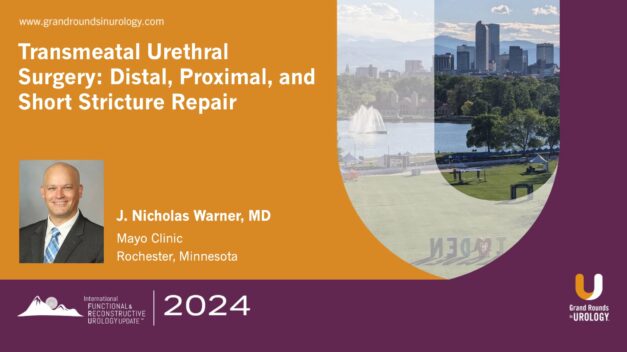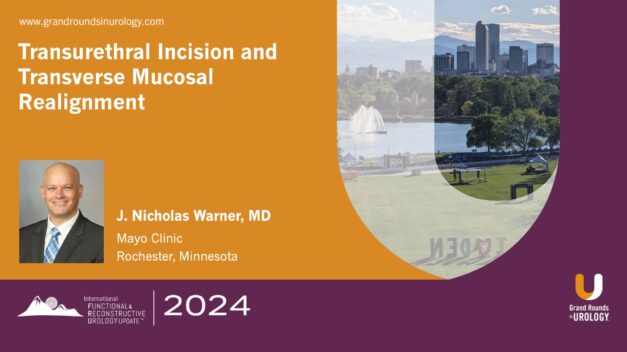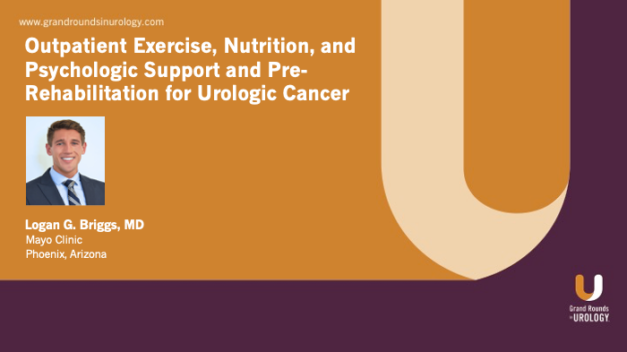Transmeatal Urethral Surgery: Distal, Proximal, and Short Stricture Repair
J. Nicholas Warner, MD, outlines techniques for managing anterior urethral strictures through endoscopic urethroplasty. In this 8-minute presentation, Dr. Warner discusses different approaches—distal, proximal, and management of short strictures.
Dr. Warner shares cases, including images and surgical videos illustrating the steps for each approach. He discusses patient criteria for each methodology and success rates.
Read More




